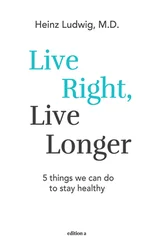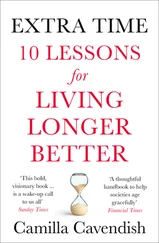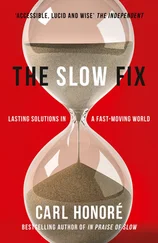The birth rate is higher in Britain, where part-time working and maternity benefits are routine. That’s partly because of high levels of immigration: 28 per cent of live births in the UK are to foreign-born women, 40though foreign-born people make up about 14 per cent of the population.
We are also breeding a nation of only children. Almost half of British families now contain only one child. It’s not clear how much of that is deliberate. In polls, Brits say their ideal family is just over two children, but the birth rate is 1.76.
Sarah Davies, a teacher, was in her mid-thirties when she plucked up the courage to ask her long-term boyfriend to settle down. He dumped her. Now, she wonders if she’s left it too late. ‘No one will fancy me if I look desperate,’ she says gloomily, staring at a dating site. Ms Davies is not one of those mythical creatures regularly accused by the UK press of ignorantly frittering away their fertility. She’s been muffling the ticking of her biological clock for years, fearing men are on a different timetable. ‘They’ve got no incentive,’ she reflects. ‘If I was a man, I’d probably focus on my career too, and not want to be hamstrung by a baby till I’d made it.’ A lack of suitable partners may explain recent increases in the numbers of single women seeking IVF, and why birth rates for women over 40 are at their highest level since 1949. 41That seems more likely than the idea that highly capable career women, who stick to every other timetable, somehow ‘forgot’ to have kids.
Is Life Expectancy Stalling?
Galloping increases in life expectancy have recently slowed dramatically in the UK, and to a lesser extent in Germany, Sweden and the Netherlands. This has surprised actuaries. Some blame it on government cuts to public services, although those were not uniform in those countries. 42Others believe it has more to do with a slowdown in the incredible progress we have made against heart attacks and stroke.
Life expectancy at birth grew substantially during the twentieth century, because we were reducing deaths among infants and children: but life expectancy from the age of 65 barely budged. Between 1970 and 2011, however, older people saw a dramatic change: life expectancy at 65 increased 20 times as fast as in the previous century. The main reason? A massive drop in deaths from heart attack and stroke, driven by people giving up cigarettes.
Since 2011, progress has slowed. ‘It’s possible we have gone back to the time before 2000, when life expectancy improvement was more gradual,’ says Gordon Aitken, insurance analyst at RBC Capital Markets. ‘From 2000 to 2010, we saw the wealthier getting healthier. But it’s hard to keep reducing deaths from cardiovascular diseases at the same rate. And obesity and diabetes are on the rise.’
There is no consensus on how the change affects different socio-economic groups. One data set suggests that the ‘Comfortable’ are unaffected, and that the losses are among the ‘Hard-Pressed’. Another suggests that all groups are seeing a slowdown in improvement. 43
While these differences are of enormous importance to insurers, because they affect annuity payouts, they are less crucial for the rest of us. Mr Aitken explains that the chance of dying in 2018, for example, didn’t increase from the previous year. What has happened is that the forecasts for growth were too optimistic. A 65-year-old man in the UK is now expected to live to 86.5, while a 65-year-old woman is expected to reach 88.4.
Sub-Saharan Africa: The Young of the Future
Sub-Saharan Africa finds itself in a demographic bind of a different sort. Its population is expected to quadruple to 4 billion people by 2100, 44with Nigeria overtaking America as the world’s third most populous country. There is much excitement at the prospect of youth burgeoning as the old world shrinks. Tanzanian President John Magufuli has claimed he sees no need for birth control, insisting a high fertility rate will boost his country’s economy. 45
Sadly, he may be mistaken. The great leaps forward made by the Asian Tiger economies came from the so-called ‘demographic dividend’: of rapid growth in working-age populations, enabling those countries to grow fast and invest, followed by sharp subsequent falls in the birth rate which boosted the skills base, because parents with fewer children could invest more in educating each one.
Sub-Saharan Africa is on a different path, of continuing population growth with no demographic dividend in sight. Its per capita income is growing slowly, and its many willing hands may not be able to find work, if they remain at low skill levels. Add to that the likely strains on the environment and infrastructure, and Mr Magufuli may come to change his mind.
The Paradox of Living Longer, But Not Being Fertile for Longer
Falling birth rates must be good news for a planet whose natural resources have been stretched to the limit by humans. And they reflect a welcome next step in the liberation of women. Almost everywhere outside sub-Saharan Africa, women are throwing off the shackles of their traditional roles. Lower infant mortality has made it safer to have smaller families. The hold of religion is waning. More women are pursuing careers. At the same time, job insecurity and the high cost of living, especially in cities where the jobs are, has left many couples fearing they can’t afford children.
Some worried governments have resorted to bribery. The Polish Ministry of Health put out a terrible video, encouraging the population to ‘multiply like rabbits’. 46Norway, Sweden, Denmark, France, Germany and Russia pay ‘baby bonuses’. Some of these schemes have had limited success: France and Sweden have the highest birth rates in Europe. But not all women want to be treated like prize cows. A Danish government video, urging women to ‘Do It for Denmark’, missed the point: that many women don’t want children, and others can’t find a good father.
It may be that the post-war baby boom was unusual. Today’s combination of greater career opportunities for women, and increased financial pressures, may be returning us to an era when people did not get married, or have children, until they felt they could afford it. Some may leave it too late as a result. Others will feel liberated from the tyrannical view that there is something wrong with you if you’re childless.
In Extra Time people study longer, leave home later and may not be settled or solvent until their mid-thirties: when they may hit the hard deadline of the biological clock. That mismatch will leave some couples very disappointed.
For the foreseeable future, it looks as though we will be stuck with male fertility declining from about 45, and female fertility from around 30. In most other respects, though, we remain younger for longer.
Конец ознакомительного фрагмента.
Текст предоставлен ООО «ЛитРес».
Прочитайте эту книгу целиком, купив полную легальную версию на ЛитРес.
Безопасно оплатить книгу можно банковской картой Visa, MasterCard, Maestro, со счета мобильного телефона, с платежного терминала, в салоне МТС или Связной, через PayPal, WebMoney, Яндекс.Деньги, QIWI Кошелек, бонусными картами или другим удобным Вам способом.












